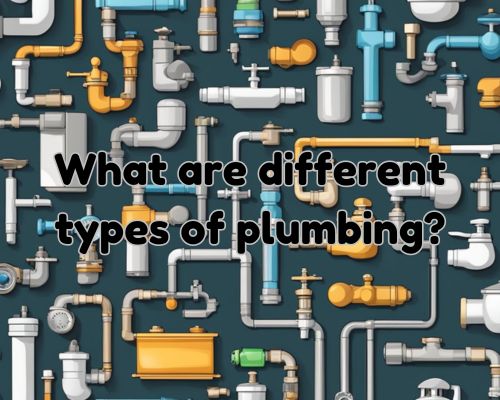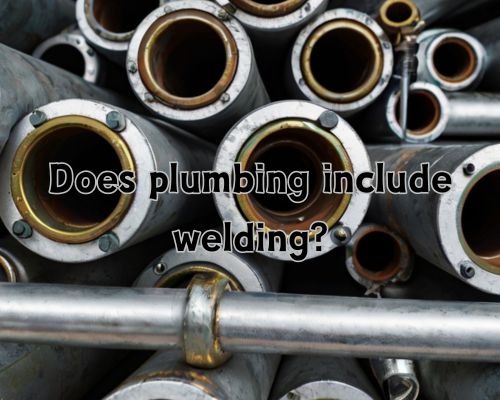What Are Different Types of Plumbing for Residential and Commercial Needs
What Are Different Types of Plumbing for Residential and Commercial Needs
Plumbing is an essential aspect of any home’s infrastructure, ensuring the supply of clean water and the efficient removal of waste and sewage. Understanding the various types of plumbing systems and pipes can help you maintain your home better and make informed decisions for renovations or repairs.
Home plumbing systems include a mix of water supply systems, sewer systems, drainage systems, and even specialised systems like well water systems and stormwater drainage.

Different types of plumbing pipes serve specific functions within these systems. For instance, copper pipes are often used for drinking water due to their durability and safety, while PVC and PEX pipes are favoured for wastewater and sewage systems because of their flexibility and cost-effectiveness.
In older homes, you might encounter galvanized steel or cast iron pipes, which were common for water and gas supply but have mostly been replaced by more modern materials.
It’s crucial to follow local codes and regulations when dealing with plumbing to ensure safety and functionality. Consulting licensed plumbers like Dean Owens from Plumber Warragul can guide you through the complexities of these regulations and the best materials for your specific needs.
Adhering to these standards helps ensure the longevity and efficiency of your plumbing system.
Types of Plumbing Pipes
Understanding the different types of plumbing pipes is crucial for ensuring efficient water distribution and compliance with building codes. Below, we will explore the characteristics, advantages, and common applications of both metal and plastic pipes.
Metal Pipes
Copper Pipes
Copper pipes are widely used due to their durability and corrosion-resistant properties. They can handle both hot and cold water, making them versatile for various residential settings.
Copper pipes are also valued for their longevity but tend to be more expensive and require professional installation. Despite the high initial cost, they offer reliable water quality and can withstand high water pressure and temperatures.
Galvanised Steel Pipes
Galvanised steel pipes, coated in a layer of zinc, resist rust and corrosion to some extent. They are durable but can be prone to internal rust over time, which can affect water quality.
These pipes are typically found in older homes and are being replaced due to their bulkiness and difficulty in installation.
Cast Iron Pipes
Cast iron pipes are traditionally used for drainage systems. Known for their strength and durability, these pipes can last for decades.
They handle high water pressure and are corrosion-resistant but can be heavy and challenging to work with, often requiring machinery for installation.
Plastic Pipes
PVC Pipes (Polyvinyl Chloride)
PVC pipes are lightweight and cost-effective, commonly used for both potable water and drainage applications. They resist corrosion, are easy to install, and are widely used due to their affordability.
Ideal for cold water systems, they may not always be suitable for hot water applications due to their lower temperature tolerance.
PEX Pipes (Cross-Linked Polyethylene)
PEX pipes are incredibly flexible and easier to install compared to traditional piping systems. They are cost-effective and can handle both hot and cold water, making them a popular choice in modern plumbing.
PEX pipes are increasingly replacing copper pipes in residential settings due to their flexibility and longevity.
CPVC Pipes (Chlorinated Polyvinyl Chloride)
CPVC pipes are similar to PVC but can handle higher temperatures, making them suitable for hot water systems. They are also resistant to corrosion and easy to install, offering a budget-friendly option for both residential and commercial applications.
ABS Pipes (Acrylonitrile Butadiene Styrene)
ABS pipes are primarily used for drainage, waste, and vent systems. They are tough and resistant to impact, making them suitable for underground installations.
ABS pipes are lighter than cast iron, easier to install, and a cost-effective choice for non-pressurized applications.
Plumbing System Applications
Plumbing systems play a critical role in residential settings by enabling water distribution, waste removal, and gas supply for heating. They ensure the delivery of clean water, the removal of sewage, and support heating systems.
Water Supply and Distribution
Water supply lines are crucial for delivering water to various plumbing fixtures throughout your home. These fixtures include faucets, showers, toilets, and sinks.
Water supply lines use different materials such as copper, PEX, and PVC, each chosen for its specific advantages.
Copper pipes are durable and resistant to corrosion, making them ideal for hot water lines.
PEX pipes are flexible and easier to install, suitable for both hot and cold water distribution.
PVC pipes are often used for cold water supply and are known for their lightweight and corrosion-resistant properties.
The water distribution system maintains water pressure to ensure efficient delivery. A well-functioning distribution system means you receive adequate water flow from each fixture without significant pressure loss.
Water heaters also form part of the supply system, providing both immediate and stored hot water.
For any installation or maintenance works, just go to Dean Owens from Plumber Warragul.
Waste Removal and Drainage
Waste removal and drainage systems handle the expulsion of sewage and greywater from your home. Components include drain pipes, vent lines, and main sewer lines.
These systems ensure that wastewater from toilets, sinks, and showers is directed away from your living spaces.
Drain pipes, typically made from PVC or cast iron, transport waste to the main sewer line. Vent lines regulate air pressure within the drainage system to prevent the formation of vacuums that can disrupt flow.
They are essential for proper sewage expulsion and prevent foul gases from entering your home.
A septic system might be used in areas without a centralised sewer system. It consists of a septic tank and a drain field, which treat and dispose waste on-site.
Stormwater drainage systems manage rainwater runoff, preventing flooding and water damage.
Gas and Heating Systems
Gas supply systems provide natural gas or propane for residential heating and cooking. These systems deliver gas through a network of pipes to appliances like stoves, water heaters, and furnaces.
Ensuring proper gas line installation and maintenance is crucial for safety.
Natural gas is the most common fuel for home heating, but propane is also used, especially in rural areas.
Water heaters can be gas-powered, electric, or even solar-powered. Gas water heaters often incorporate a heat exchanger to efficiently transfer heat to water.
Solar panels are increasingly being used to supplement traditional heating methods by providing renewable energy to heat water. These systems reduce reliance on gas and lower energy costs.
Whatever the fuel source, maintaining your gas and heating systems is essential for comfort and energy efficiency.

